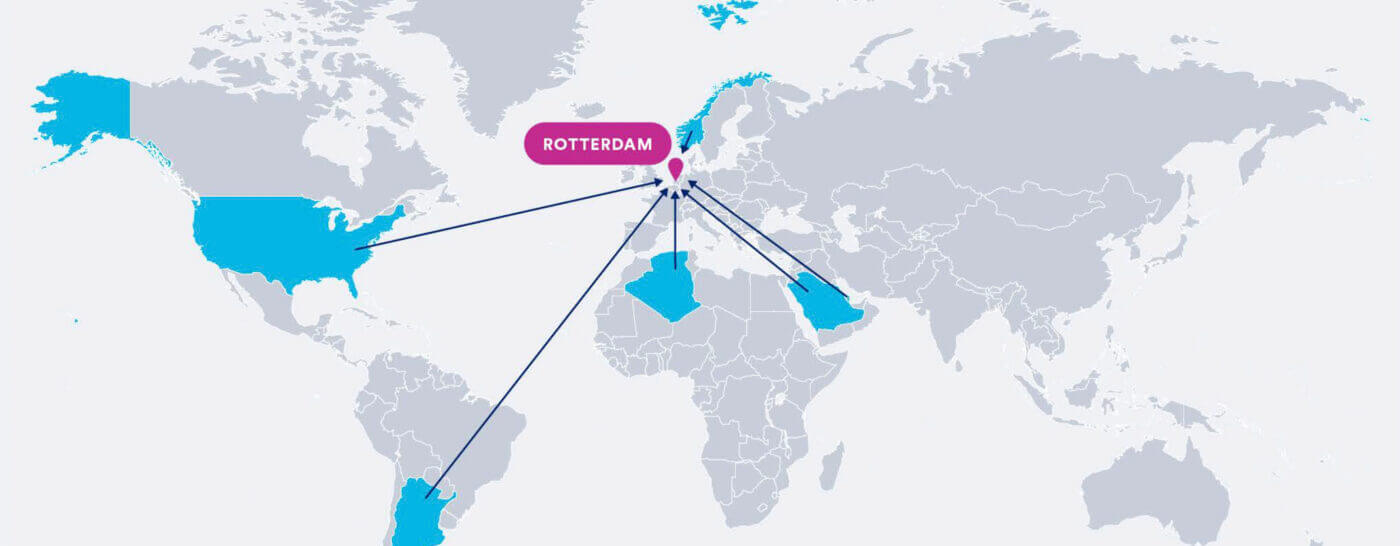
New CATF report finds Europe’s hydrogen will likely need to come from Europe, or nearby
BRUSSELS – A new report from Clean Air Task Force (CATF) analyses the costs of different methods for long-distance import of low-carbon hydrogen to Europe, finding that the hydrogen needed to meet demand will likely need to be produced near the point of use or imported by pipeline.
“Global decarbonization efforts are expected to substantially increase demand for low-carbon hydrogen and stimulate the development of transportation networks that can connect low-cost producers of the fuel with demand centers around the world,” said Magnolia Tovar, Global Director, Zero-Carbon Fuels at CATF. “But transporting low-carbon hydrogen in large quantities, over long distances poses significant cost and technology challenges — largely due to the hydrogen’s fundamental properties.”
The report, Techno-economic Realities of Long-Distance Hydrogen Transport, identifies potential least cost options and also outlines several policy recommendations for developing a cost-effective, low-carbon hydrogen economy in Europe.
Pathways for importing low-carbon hydrogen to Europe

It also models the cost of different pathways for delivering low-carbon hydrogen from likely producing regions to Europe’s largest seaport, the Port of Rotterdam in the Netherlands, including Norway, Algeria, the Arabian Gulf, and North and South America. The report finds that:
- Due to its inherent physical properties, importing hydrogen to Europe over long distances, whether by ship or pipeline, will be expensive and relatively inefficient;
- Between transporting hydrogen via ship or via pipeline, transporting by pipeline consistently ranks as the most cost-effective option in the short and long term;
- Owing to economies of scale, costs per kilogram (or MWh) of delivered hydrogen decline with higher import volumes for all carriers and export locations;
- Producing hydrogen with imported liquid natural gas (with low-carbon energy inputs and carbon capture) will likely be more feasible and cost-effective than importing low-carbon hydrogen from distant suppliers
- Pathways for hydrogen transport by ship incur a significant energy penalty for conversion steps that will likely stay significant even with scale and with technical improvements; and
- The use of “uncracked” ammonia offers the cheapest pathway for transporting hydrogen molecules by barge.
These findings highlight concerns about high import targets from the European Commission and other governments. Many governments have recognized the need for more low-carbon hydrogen and have announced plans to rapidly scale production and imports. The EU has announced aggressive targets, planning to produce 10 million tonnes per annum (TPA) of hydrogen domestically and import 10 million TPA of renewable hydrogen by 2030, with former climate chief Frans Timmermans declaring that, even in the long term, Europe is “never going to be capable of producing its own hydrogen in sufficient quantities.” In the U.S., the Department of Energy aims to increase low-emissions hydrogen production from nearly zero today to 10 million TPA by 2030.
“Global decarbonization is an enormous and multifaceted challenge that requires an equally multifaceted response — one that explores a variety of technologies and decarbonization strategies,” said Ghassan Wakim, Production and Export Director, Zero-Carbon Fuels at CATF. “But we must take care in developing public policies and deploying public resources to prioritize the most promising and cost-effective technologies first. As governments consider how best to utilize low-carbon hydrogen, it is important to avoid expensive investments in infrastructure that is inherently inefficient.”
To help guide the deployment of low-carbon hydrogen in Europe, the report lays out several recommendations, including:
- Plans for hydrogen deployment should prioritize to “no-regrets” sectors that include existing uses of hydrogen as a chemical feedstock (e.g., refining, ammonia, methanol) and future uses in hard-to-abate sectors. These are sectors where there are no other energy-efficient or cost-effective options.
- Hydrogen demand forecasts, such as the European Commission’s goal of supplying 20 million tonnes per year of clean hydrogen by 2030, should be re-examined to develop more realistic estimates.
- A credible and consistent international system for certifying clean hydrogen across the entire value chain is urgently needed.
- Import pathways that rely on the long-range transport of liquefied pure hydrogen or on a liquid organic hydrogen carrier should be investigated carefully due to the energy and emissions intensity of these supply chains in addition to other limiting factors when deployed at scale.
- European institutions must identify what part of Europe’s expected hydrogen demand could be met by the direct use of ammonia and spur development of related technologies and infrastructure in applications where no more efficient or cost-effective decarbonization option exists.
Read the report here for a detailed description of research methods and findings. For more on CATF’s work in this space, explore our homepage.
Clean Air Task Force commissioned KBR Inc. to model the cost of different pathways for delivering low-carbon hydrogen from likely producing regions to Europe’s largest seaport, the Port of Rotterdam in the Netherlands.
Press Contact
Rowan Emslie, Communications Director, EU, [email protected], +32 476-97-36-42
About Clean Air Task Force
Clean Air Task Force (CATF) is a global nonprofit organization working to safeguard against the worst impacts of climate change by catalyzing the rapid development and deployment of low-carbon energy and other climate-protecting technologies. With 25 years of internationally recognized expertise on climate policy and a fierce commitment to exploring all potential solutions, CATF is a pragmatic, non-ideological advocacy group with the bold ideas needed to address climate change. CATF has offices in Boston, Washington D.C., and Brussels, with staff working virtually around the world.


